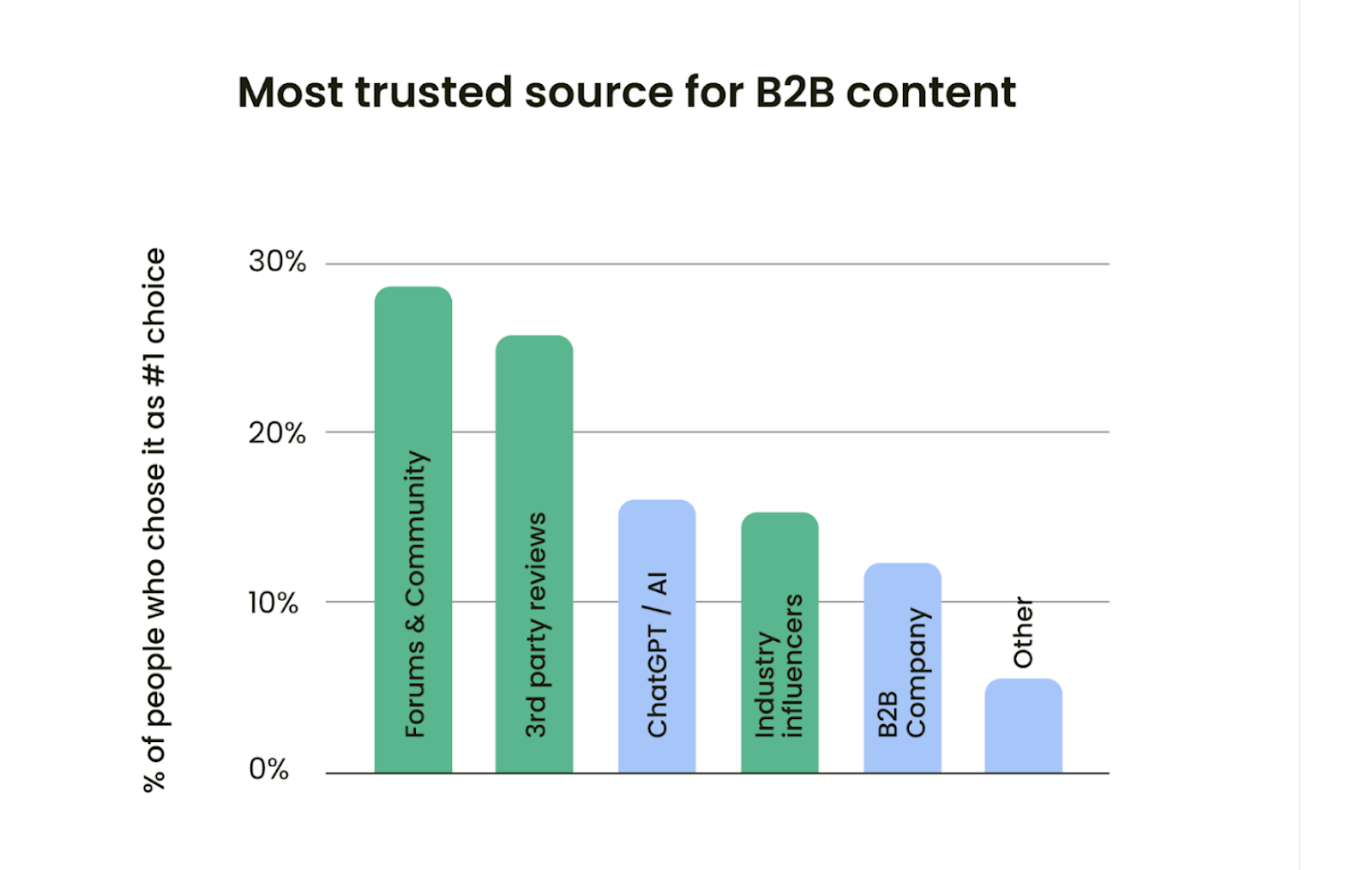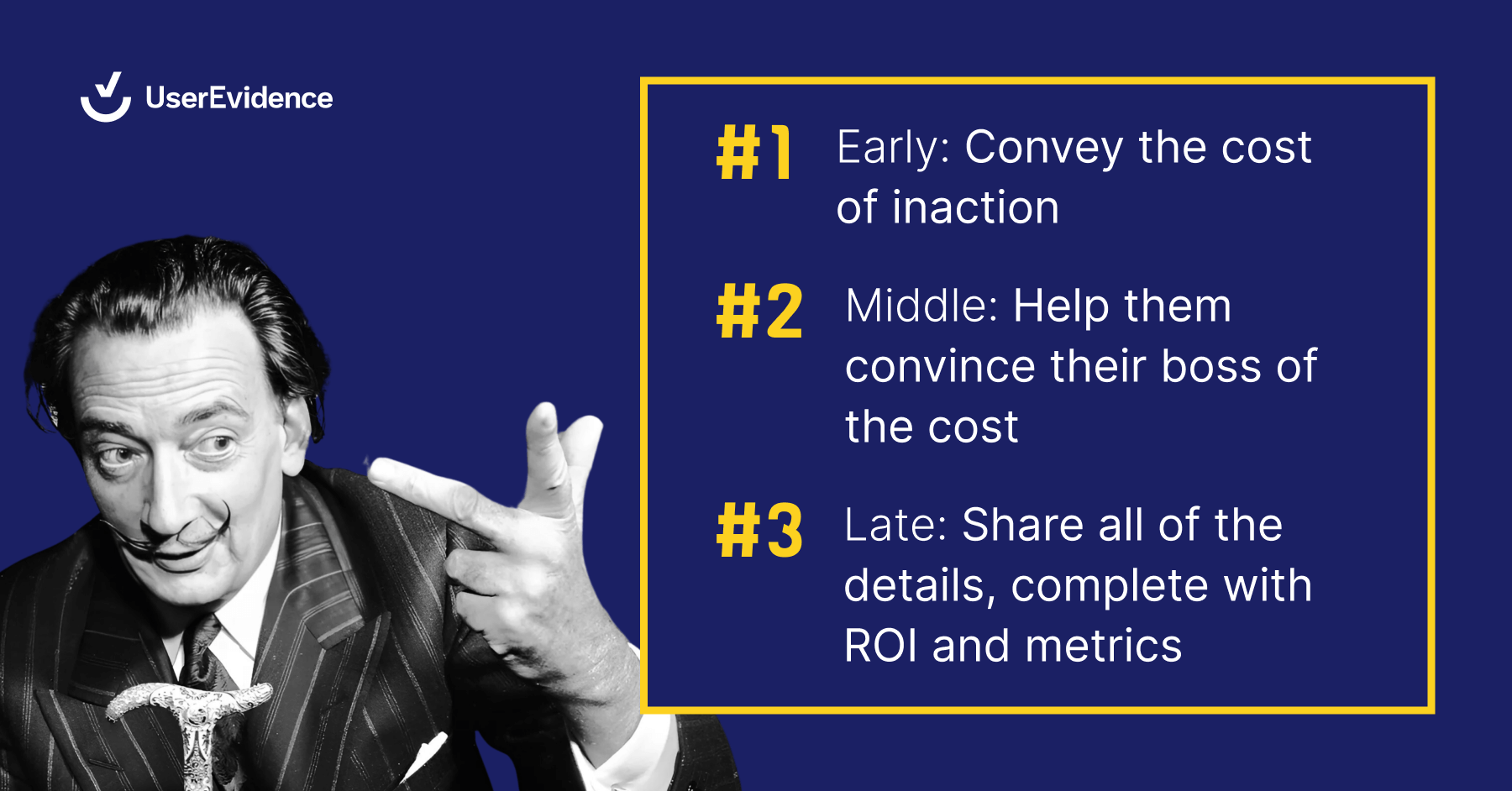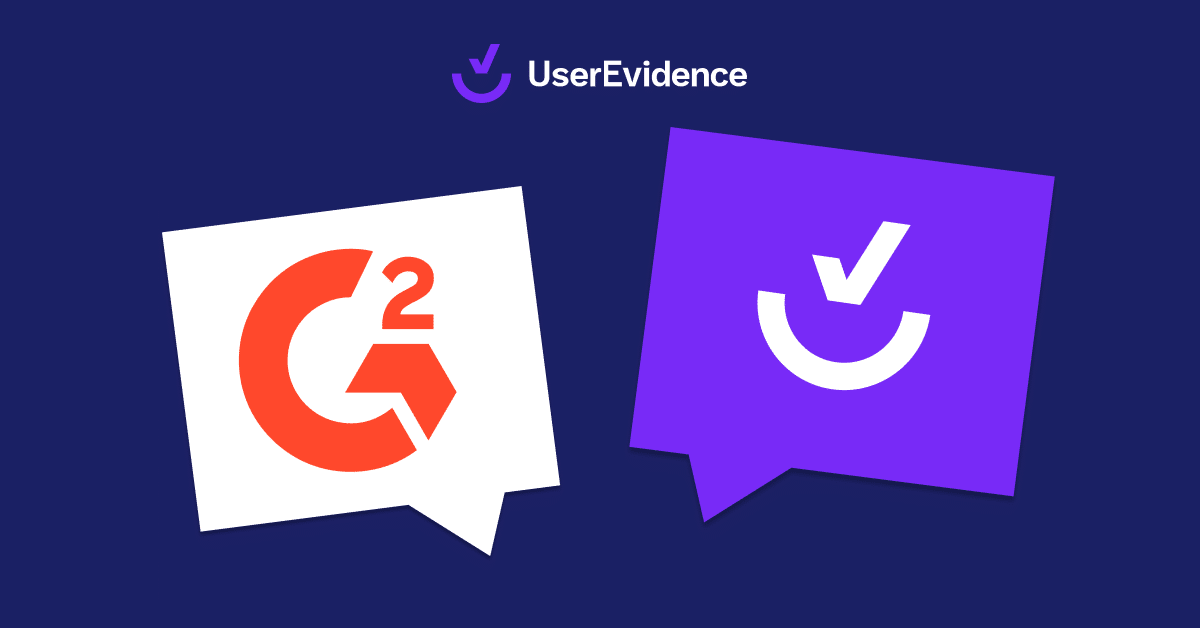“Here’s our product — it’s amazing, and you should buy it!”
No seller would start a sales call like that. If they did, the prospect likely isn’t going to buy what they’re saying, let alone what they’re selling.
Not, at least, not until they get some proof.
Jen Allen-Knuth, the founder of DemandJen and a seller with 18 years of enterprise sales experience, agrees. “If I’m a reactive salesperson, I lead with trying to convince someone how great my product is. But my prospect’s sitting there saying, ‘Okay, but would it work for us? I need to see an example of another company that looks just like us to check that box.’”
B2B buyer trust is lower than it’s ever been. Company websites are the least trusted source for B2B content, while 90% of buyers say that they somewhat or completely trust peers in their industry.

Source: Workweek
Sellers desperately need social proof to rebuild trust with buyers. When they lead with customer evidence (instead of singing their product’s praises right away), they overcome objections before prospects even voice them.
Customer evidence is the best way to help sellers prove ROI and give buyers the confidence to move forward. The wisdom in the rest of this article is all from Jen; she shares the power of customer proof points along with practical ways to use them to drive better sales and business outcomes.
Let’s unpack the customer evidence gap
We need to back up: Why don’t buyers trust vendors?
It’s pretty simple, according to Jen: “The motivation of a salesperson is to close a deal; the motivation of a customer is to solve a problem.”
Ten years ago, buyers couldn’t necessarily network or visit an online community to crowdsource feedback on a piece of software. Now, they have information — and agency.

“Why would I ever go to a salesperson early when I could go to a bunch of other people and learn what to watch out for, so I’m not the least informed person at the table?”
Jen points out. The data backs her up: Today’s B2B buyers are already 57% of the way through their journey before talking to a salesperson.
That’s why sales reps need customer proof (and lots of it). It empowers them to build trust with words that aren’t their own. Sales leaders and enablement practitioners are in dire need of:
- Customer metrics with before-and-after examples of their product’s impact
- Quotes from across industries, as well as stories of wins big and small
Customer proof isn’t a nice pitch deck slide to include anymore; it should anchor every conversation a sales rep has with a buyer.
What sellers get today vs. what they need: Rethinking customer stories
You may be thinking, “Well, we have a library of case studies.” That’s great, but sellers often don’t have the customer stories they need to be successful.
“Part of the problem is marketing and sales aren’t really aligned in the first place around the right way and placement of using social proof,” Jen explains.
This isn’t surprising: Most go-to-market teams aren’t exactly known for their excellent collaboration, so naturally, this lack of alignment impacts how customer proof is gathered. Sales asks marketing for content without giving context — and marketing isn’t always listening to call recordings or talking with customers, so they don’t know where deals are falling apart. They create the same kind of collateral they always have: generic, PDF “Problem-Solution-Outcome” case studies.
And while case studies have a place in the sales process, sellers shouldn’t lead with them, according to Jen. “What I really need upfront is a bank of stories that can help me articulate my prospect’s problem in the right way,” she explains.
These offer a strategic way to rethink customer proof and start getting sellers that bank of stories they need.
1. Focus on the problem, not the vertical
Sales and marketing teams tend to zero in on verticals — they look for case studies that exactly match a prospect’s industry, size, and region. But those demographics aren’t as important for early sales conversations as the specific problem the customer in question needs to solve.
“The story doesn’t have to change to make the star someone in that industry. It just has to relate to the same problem or need state,” Jen explains. That’s how sellers can hook prospects into imagining themselves solving that problem with your product.
2. Aim for the end user and champion, not just the business buyer
As an enterprise seller, Jen spent a lot of time aiming for the top-of-house decision-makers. Sometimes, this was the right call, but she also learned the value of connecting with less senior employees to create champions out of technical buyers and end users.
Front-line employees are focused on performing well so they can keep their job or earn a bonus. And “performing well” looks like hitting their KPIs and making the business more productive and profitable through their work. But here’s the thing: Better productivity and profitability are the same goals top-level decision-makers are after, so making advocates out of would-be users is a great use of time, even if they’re not VPs or CROs.
“Everyone’s trying to solve the same problems, but the pain is felt differently,” Jen explains.
Want to move up the chain more quickly? Rally end users as champions for the problem the product solves — then, when you’re reaching out to execs, you can build a case on stories not just from the C-suite, but also from their employees.
3. Give sellers a story to tell
Top salespeople are great storytellers, so they need stories that resonate both logically and emotionally. They have to strike a chord and get the prospect wanting more.
Instead of a shiny piece of collateral, sales enablement can provide conversation-starting stories (even in the simple form of a bulleted list) for top sellers to read, digest, and deliver in a compelling way. Once the prospect is hooked, then they can go find more details of the story in a written or video case study.
Establish a natural progression around how you use customer stories. Learn when to tee up your sellers with a narrative they can make their own and when to simply let your customer’s words shine. We’ll unpack that next.
Adopt more (and better) customer evidence in the sales process
Are sellers or sales leaders responsible for equipping sales teams with customer evidence?
Jen says that, ideally, leaders would provide those stories — and handle “the choreography” of organizing the main talking points. They need to teach their team about the ingredients of a good story and let them run creative experiments in telling it.
When sellers use existing case studies to tell stories that they think will be compelling for their target accounts, they’ll probably encounter gaps. That’s the time for them to flag the issue to their leaders or enablement practitioners so those folks can partner with marketing to identify recently closed-won customers who had that same pain.
Quick sidenote: Better working relationships between sales and marketing are possible. Start by showing marketing and enablement what’s happening on customer calls and why deals are falling through. From there, sales leaders can work with marketing to identify how current marketing content is falling short and better arm the team.
“The language is not ‘where you are falling short,’ but ‘where we as a team are falling short’ — and how we’re arming our people to solve for that problem,” Jen says.
Take a crawl-walk-run approach to determine how mature your customer evidence efforts are and ask for what you need:
- Crawl: Figure out when in the sales process you’re losing the most deals. (e.g., Are you struggling to book meetings, or can the champion not get other buyers on board?) Identify what evidence you need for that stage, and ask for it.
- Walk: If you have evidence already, focus on refactoring existing customer stories into something the champion can use to influence others, like an email sellers can send or a bulleted list of story details they can try sharing on their next call.
- Run: Reframe challenges and concerns from different customer stories instead of just focusing on the positives. This is especially important if the prospect agrees on the problem and thinks the product could solve it, but still isn’t ready to sign. “You can probably take the asset you already have, but you just need to add some context about the problem upfront so they can see themselves in the story a bit more,” Jen notes.
How to work customer evidence into every sales conversation
As you build out a robust bank of customer evidence, your sales team will want to start bringing customer stories into every stage of the sales cycle because they work. Here’s some guidance around what they’ll likely need in every stage.

Once you know the kind of stories you need for every sales conversation, how do you help individual sellers take action on those customer stories? Jen shares two tips.
1. Validate, then create
“Don’t create a bunch of stuff and then throw it to sellers,” Jen says. “Create one story, and validate it with sellers.” Once you have that first story, role play with your team to see how they’d use it.
Chances are, the first story won’t be perfect out of the gate; it’ll need feedback and work. So instead of creating a huge bank of stories before workshopping them with your team, test one out internally with a mix of your best and average sellers. Make sure the story is solving for the agreed-upon problem that many buyers have.
2. Make space to practice
Once you’ve validated those initial customer stories, you need to create opportunities for sellers to practice using them. Figure out which stage is most problematic for your team and why you’re losing there. Then, get together to practice what you can do differently to win more.
Here’s an exercise Jen recommends: Have everyone pick a story that they think will be most relevant to an account they want to break into and then figure out how to tell the story to their teammates in a way that gets the customer to want to meet with you.
“If they have to do something in front of their peers, it’s going to force them to at least look at the social proof,” Jen explains. “Half the battle is we create stuff, and sellers never look at it — so create an opportunity where they are forced to use it.”
Unlock customer proof’s potential to close more deals
Just as important as having customer stories is wielding them well. Don’t start by hyping up your product or even a quote from a customer hyping up your product — start with your buyer’s priorities and problems, always.
“A lot of sellers use the full story upfront, hoping it will make someone want to come on the journey,” Jen explains. “In reality, the first job to be done is to give the prospect in front of you an answer to, ‘Can I actually show my boss that this is a problem worth solving, knowing that it’s risky to raise my hand and say that I want to spend more money?’”
When you use the right customer evidence the right way, the answer will probably be “yes.”
It’s time to tap into the power of customer proof and create an ever-growing library of stories to empower your sellers. UserEvidence can help.





